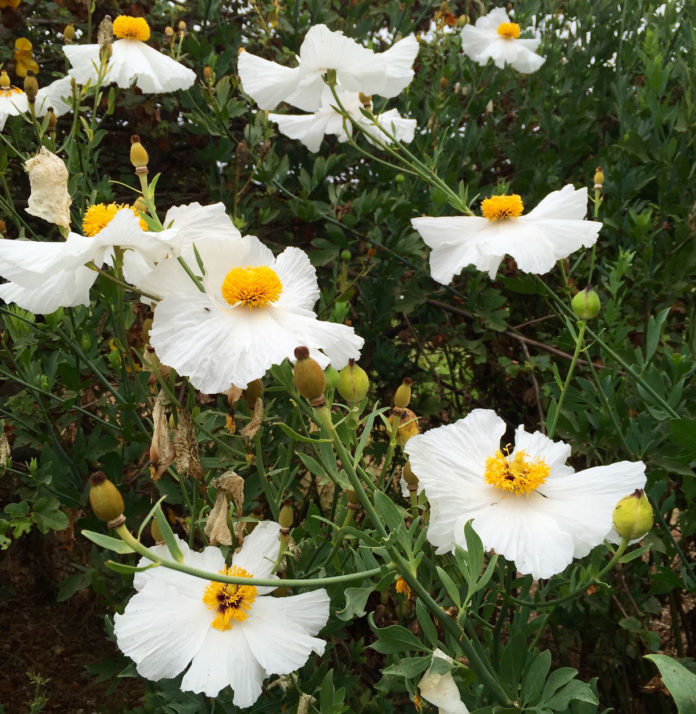
Fall is a good time to design and plant a new garden. I love to read those articles in gardening magazines with titles like “How to Create a Complete Backyard in a Weekend” or “This Front Yard in Just One Year.” If you’re like me you think, “Can I really do that?” There are some shortcuts that can make this happen, and fall is the perfect time to try out some of them.
Start by making sure you have paths where you need them. Simple flagstone set in sand or soil works fine for meandering through the garden. A more formal and permanent path is needed to lead guests to the front door but stepping stones are quick and easy in other areas. Hardscaping like paths, walks and fences establish the framework for everything else to build from.
If you want your garden to fill in quickly, choose key plants that grow fast and are suited to your conditions of sun exposure, soil type and water availability. Plants given their preferred conditions will grow and flourish quickly. Designate irrigated areas for must-have plants and use plants that like it dry in your other areas. Most important, if you are going for high impact quickly, choose plants that perform right away instead of those needing a few growing seasons to grow in.
Begin your planting by choosing trees and shrubs for structure, especially in the winter. Fast growing trees include chitalpa, red maples, mimosa, birch, Raywood ash, flowering cherry, evergreen pear, bronze loquat and Purple Robe locust.
There are many shrubs that grow well in our area and fill in quickly. Choose from carpenteria, Matilija poppy, abelia, ceanothus, smoke bush, butterfly bush, bottlebrush, choisya, rockrose, escallonia, hydrangea, philadelphus, plumbago, abutilon, Lion’s Tail, Pride of Madeira and weigela.
Next come perennials that mature quickly and make your garden look like it’s been growing for years. East Friesland salvia is one such plant and blooms summer through fall if spent stems are removed. Their intense violet-blue flower spikes cover plants 18-inch tall spreading 2-3 feet wide. They look great in wide swaths across the garden or along the border of a path and attract hummingbirds, butterflies and bees.
Don’t forget the other salvias. There are some 900 species of salvias. They all grow quickly and are the workhorses of the fall garden. Autumn Sage (Salvia greggi) is drought tolerant and deer resistant (really). Although it tolerates some shade it looks best when planted in full sun. To encourage repeat blooms, trim off spent flower stalks when they start to look rangy. They come in a wide range of colors to accent or match any garden. Recent selections include magenta, burgundy, red, rose, pink, salmon and white.
Walkers Low catmint is another perennial that keeps going and growing. This vigorous spreading member of the mint family blooms profusely with little spikes of 1/2 inch periwinkle blue flowers from late spring through fall. Catmints are easy to care for. Shear plants back by half at the beginning of the season and after flowers fade. They are drought tolerant, too.
Where you need a big clump of color to fill in a space look also at mimulus, erysimum, penstemon, mondarda, purple coneflower, verbena de la mina and yarrow. They all put down deep roots and mature quickly. Be sure to include combinations that bloom in different months.
Yes, creating a garden slowly over many years is satisfying, but if you need to fill in a new area quickly, draw on some of these tips and your bare dirt will be full and beautiful in no time.
Jan Nelson, a landscape designer and California-certified nursery professional, will answer questions about gardening in the Santa Cruz Mountains. Email her at ja******@*ol.com, or visit jannelsonlandscapedesign.com.











